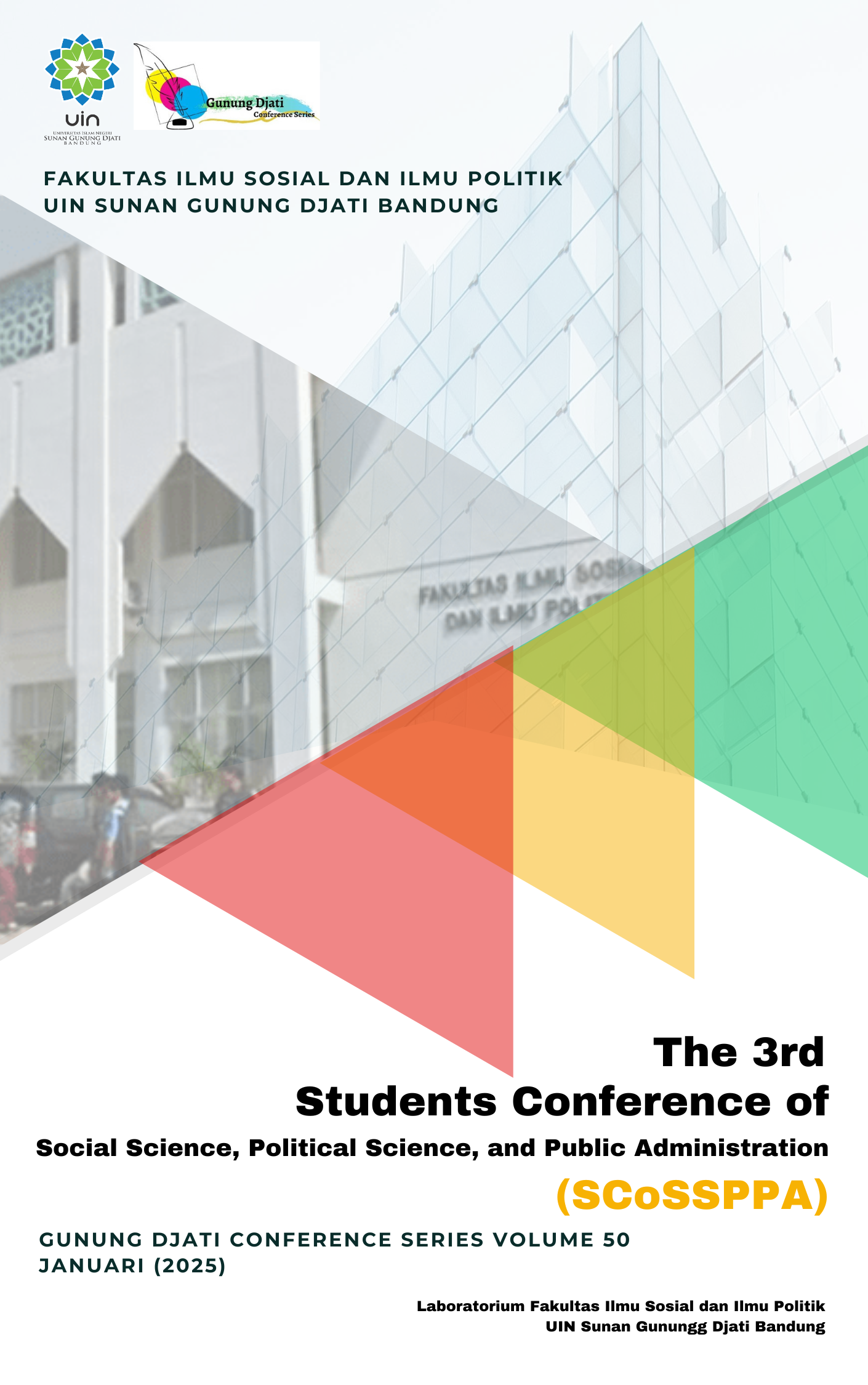Partisipasi Politik Masyarakat Purwakarta Pada Pilkada 2024 dan Pengaruhnya Terhadap Kualitas Pemilu
Isi Artikel Utama
Abstrak
The Regional Head Election (Pilkada) serves as one of the main pillars of democracy in Indonesia, providing a mechanism for citizens to choose their leaders and determine the direction of development policies. Political participation plays a crucial role in shaping the quality of Pilkada, particularly in fostering political legitimacy, transparency, and accountability. This study focuses on analyzing the level of political participation in Purwakarta Regency during the 2024 Pilkada, aiming to identify influencing factors and offer practical recommendations to enhance future participation. This research employs a descriptive qualitative method, utilizing data sourced from official KPU documentation and interviews with key informants. The findings reveal a participation rate of 74%, with significant variations across districts. Factors influencing participation include education level, access to information, trust in candidates, and geographical barriers. Additionally, political apathy and money politics remain challenges that need to be addressed. The study recommends several strategic actions, such as increasing the intensity of electoral socialization, strengthening political education, and providing special services for groups with limited access to polling stations. It also highlights the importance of improving candidate quality to build public trust. Future research is suggested to focus on apathetic groups, the effectiveness of socialization strategies, and the engagement of first-time voters to strengthen the foundation of local democracy. Thus, it is hoped that political participation in Purwakarta Regency can be further maximized, ensuring a more representative and high-quality Pilkada
Unduhan
Rincian Artikel

Artikel ini berlisensi Creative Commons Attribution 4.0 International License.
Referensi
Brady, H. E., Verba, S., & Schlozman, K. L. (1995). Beyond SES: A resource model of political participation. The American Political Science Review, 89(2), 271–294.
Diamond, L., & Morlino, L. (2005). Assessing the Quality of Democracy. Johns Hopkins University Press.
Habermas, J. (1996). Between Facts and Norms: Contributions to a Discourse Theory of Law and Democracy. MIT Press.
KPU Kabupaten Purwakarta. (2024). Data Partisipasi Pemilih dalam Pilkada Kabupaten Purwakarta. Diakses dari situs resmi KPU.
Liddle, R. W. (1996). Leadership and Culture in Indonesian Politics. Allen & Unwin.
Rohendi, A., & Muzzammil, M. (2021). Dinamika Pemilih Pemula dalam Pilkada Jabar 2018: Studi Kasus di Kabupaten Purwakarta. Jurnal Politik Lokal, 5(2), 123–140.
Fung, A., & Wright, E. O. (Eds.). (2003). Deepening democracy: Institutional innovations in empowered participatory governance. Verso.
Babbie, E. (2010). The practice of social research (12th ed.). Wadsworth Cengage Learning.
Creswell, J. W. (2014). Research design: Qualitative, quantitative, and mixed methods approaches (4th ed.). SAGE Publications.
Denzin, N. K., & Lincoln, Y. S. (Eds.). (2005). The SAGE handbook of qualitative research (3rd ed.). SAGE Publications.
Patton, M. Q. (2002). Qualitative research & evaluation methods (3rd ed.). SAGE Publications.
Silverman, D. (2011). Interpreting qualitative data: A guide to the principles of qualitative research (4th ed.). SAGE Publications.
Putnam, R. D. (2000). Bowling alone: The collapse and revival of American community. Simon & Schuster.

